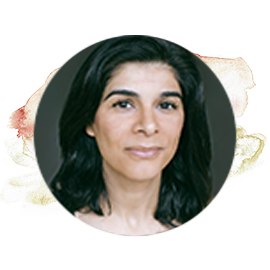Svādhyāya, literally means one’s own study, Self-study, or “to focus upon the Supreme Self in all circumstances without any distraction.” It is Patanjali’s fourth Niyama, which are ‘the Do’s’ and the second step of his eight limbed system. Almost all of us, have to put in effort and practice to get to a place where we can finally let go and experience our own true nature; who we really are. This effort is svādhyāya.
There is a wonderful story at the beginning of the book The Wise Heart. In a large temple north of Thailand’s ancient capital, Sukotai, there once stood an enormous and ancient clay Buddha. Terrible storms, changes of government and marauding armies had come and gone but the Buddha endured. One day the monks who tended the temple noticed that the statue had begun to crack. After a stretch of particularly dry and hot weather, one of the crack’s became so wide that a curious monk took his flashlight and peered inside. What shone back at him was a flash of brilliant gold! Inside this plain old statue, the monks discovered one of the largest and most luminous golden Buddhas ever created. The Buddha had been covered in plaster and clay to protect it during times of conflict and unrest. In much the same way, we also encounter threatening situations that lead us to want to protect ourselves and cover up our own essential nature. But our innate nobility wants to come shining through no matter how hard we try to hide it. How, then, do we remember who we really are?
Something that has stayed with me since teacher training, is Sharon’s voice, reminding us that “Yogis are both radical and practical”. Radical because we want to get to the root of the matter. Practical because we want to know how to do it.
Svādhyāya is often translated as the study of Self through the study of scripture. The scriptures hold up a mirror for us to see our own true nature. “To the seer, all things have verily become the Self: what delusion, what sorrow, can there be for him who beholds that oneness?” Isha Upanishad. Studying theses ancient texts and the writings of realised beings reminds us that others have come before us on this path and that experiencing our essential nature is indeed possible for us in this lifetime. As B.K.S Iyengar said so eloquently: “The person practising svādhyāya reads his own book of life, at the same time that he writes and revises it. There is a change in his outlook on life. He starts to realise that all creation is meant for bhakti (devotion), rather than for bhoga (enjoyment), that all creation is divine, that there is a divinity within himself and that the energy which moves him is the same that moves the entire universe.”
But at their root, all yoga practices are a form of Self-study, not just the study of scripture. They reveal to us who we really are. That we are spirit, soul, Self with a capital S, or as John Coltrane experienced and shared with us through his music, we are A Love Supreme. If you have not had glimpses of this, you likely would not be reading this. So how do we remember? How do we get to the root of who we really are? We study ourselves through the various yoga practices and they, in turn, reveal to us our true nature.
Nisargadatta Maharaj said: “The mind creates the abyss, the heart crosses it”. Chanting helps us get into the deep dark corners of our heart, where we may have buried feelings like shame, betrayal, guilt, hurt, and anger. It also reminds us of our heart’s innate capacity for joy. Ultimately, it reveals to us our longing to be re-united with our Self. For me, chanting has been the most potent of practices.
The physical practice reconnects us to our body and helps us not to get too attached to it. The practice reminds us that we are more than our body, with all its potential aches, pains and eventual decay and death. We cannot get around the body ageing, no matter how much botox we may throw at the problem!.
Meditation, helps us to remember that our thoughts are just that: our thoughts. And wow is it a minefield up there. It was found that the average person has about 12,000 to 60,000 thoughts per day. Of these thousands of thoughts, 80% are negative, and 95% of them are exactly the same repetitive thoughts as the day before.
And so these practices take us back to the root of who we are. Not our storyline, or our gender, or the color of our skin, or how successful we are, but who we are underneath all of these layers. We remember that we are spirit and that we have a heart that has a vast capacity, like the ocean, and that we can take refuge in it. Or better said: Om Shri Krishna Sharanam Mama. The more we remember, the more we experience loving kindness towards our self (even if it is painstakingly slow!) and others. If we do not know our true nature, we may get stuck seeking validation from the outside, and this is a risky proposition at best. Inevitably, this remembering of who we are leads us to want to act and uplift other beings in whatever way we can. It is the open and tender heart that has the capacity to transform the world. We begin to embody Lokah Samastah Sukhino Bhavantu.


